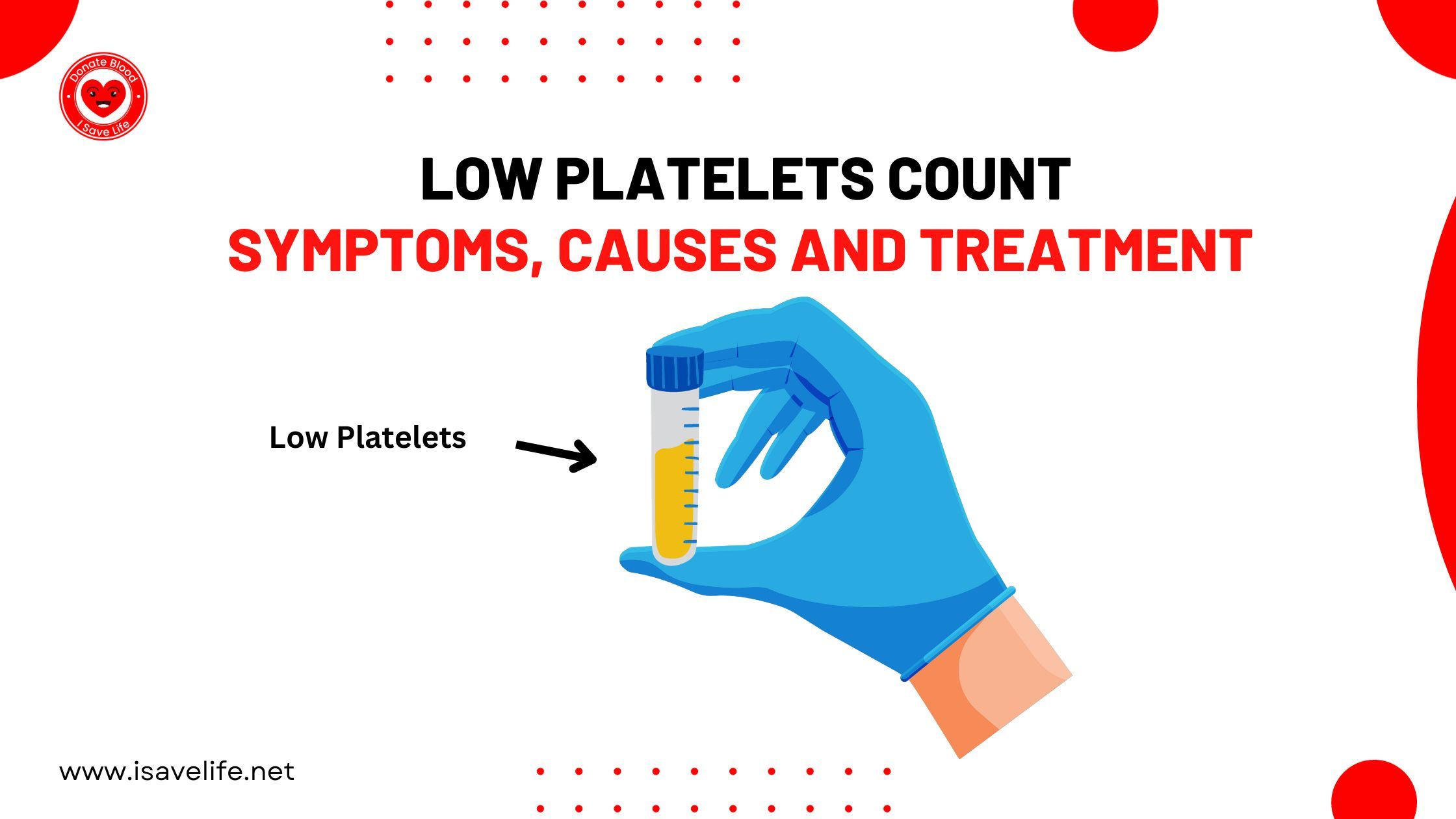
Low Platelets Count: Symptoms, Causes and Treatment
15-Jan-2024
Blood cells called platelets play a crucial role in preventing bleeding by forming blood clots. In adults, a normal platelet count is usually between 150,000 and 450,000 platelets per tiny drop of blood. When the bone marrow doesn’t produce enough platelets. It leads to a low platelet count, a condition known as thrombocytopenia. People with this condition may experience easy bleeding and struggle to stop it. Some individuals with certain medical issues, like autoimmune diseases, or those taking specific medications may also develop thrombocytopenia.
Symptoms of a Low Platelet Count:
1. Easy Bruising: Notice more bruises than usual? It could be a sign of low platelets.
2. Frequent Nosebleeds: Platelets help in clotting, so a low count may lead to more nosebleeds.
3. Petechiae: Ever noticed a tiny red and purple spot on your skin? These can be caused by bleeding under the skin due to low count.
4. Prolong Bleeding: Small cut taking longer to stop bleeding? That’s another red flag.
Causes of a Low Platelets Count:
1. Bone Marrow Issues: Problems with the bone marrow can hinder platelet production.
2. Autoimmune Disorder: Condition where the immune system attacks its own cells can affect platelet levels.
3. Medications: Certain drugs can contribute to a decrease in platelets.
4. Viral Infection: Some infections, like hepatitis C, can lead to low platelet count.
Treatment of Low Platelets:
The good news is that low platelets can often be managed. Treatment depends on the underlying causes.
1. Medications: Your doctor may prescribe medications to stimulate platelet production.
2. Treating underlying conditions: addressing the root causes, such as managing autoimmune disorders, can help improve platelet levels.
3. Platelet Transfusion: In severe cases, a transfusion of platelet may be necessary
Prevention of Low Platelets:
Prevention of Low Platelets:
While not all causes can be prevented, there are things to do to support healthy platelet levels.
1. Balance Diet: Nutrient-rich foods support overall health, including platelet production.
2. Regular Exercise: Stay active to promote good blood circulation.
3. Limit Alcohol: Excessive alcohol can adversely affect platelet production.
Conclusion: Low platelet count may sound daunting, but with the right knowledge and proper medical care, it can be managed. If you suspect any symptoms or have concerns, don’t hesitate to reach out to your healthcare provider. Remember, understanding your body is the first step toward a healthier you.